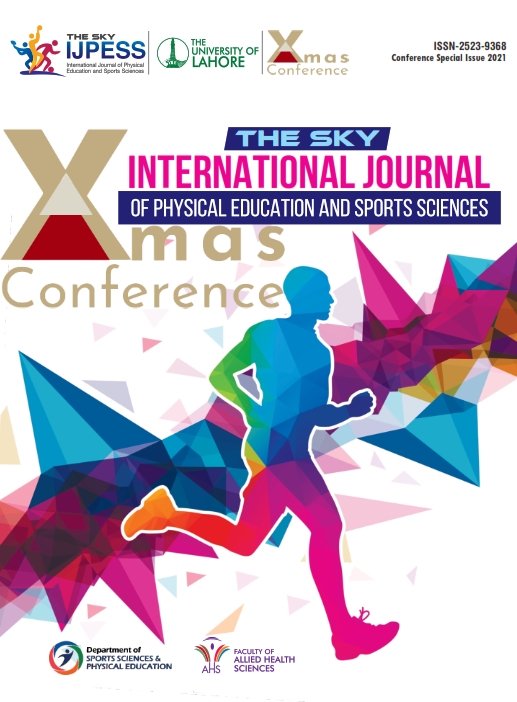DIFFERENCES IN PHYSICAL FITNESS AND BODY MEASURES BETWEEN CHILDREN WITH AND WITHOUT OLDER SIBLINGS
DOI:
https://doi.org/10.51846/the-sky.v0i0.2078Keywords:
children, physical fitness, siblings,, obesity,Abstract
Deterioration in children's physical fitness accompanied by unhealthy weight is a globally recognized problem. Among many other research directions related to factors that cause/influence a decline in physical fitness, there is presently an increase in the number of studies linked to family relationships and especially the influence of older siblings on the fitness of the younger children. The study attempted to determine whether having an older sibling(s) influences the physical fitness and anthropometric measures of the younger siblings, as compared to the children without older siblings. The study included 108 children aged 9 and 10, 55 of them with an older sibling(s). Height, weight, and 4 skinfolds were measured, and BMI was computed. Physical fitness was assessed by pull-ups, curl-ups, V-sit and reach, shuttle run, one-mile run, and handgrip strength. ANCOVA's on body measures as well as on physical fitness were applied. Based on the BMI values, results indicated that 40.7% of the overall sample of the children were in the categories of overweight or obesity and that on average, results in fitness tests were modest. The ANCOVA's, controlling for age, were computed with the intention to discover whether gender and/or the presence of older siblings influences physical fitness or body composition. Interactions were not significant, though, a significant main effect of having older siblings was obtained for the sum of skinfolds (F (1, 103) = 5.097, p = .026, partial η2 = .047) in ANCOVA computed for body measures. In ANCOVA for fitness measures significant main effects of having older sibling were obtained for pull-ups (F (1, 103) = 5.736, p = .018, partial η2 = .053) and shuttle run (F (1, 103) = 4.633, p = .034, partial η2 = .043), while the main effect of one-mile run was near statistical significance (p=.082). The results mostly support previous studies where the children with older siblings were at an advantage over the children without older siblings. Considering body composition, children with older siblings had significantly less subcutaneous body fat. The level of physical fitness was on average modest, children with older siblings outperformed children without older siblings in pull-ups and shuttle run, while the endurance test was near statistical significance. Older siblings may positively influence the healthy behavior of younger children in physical activity and siblings’ relationships may be one of the agents for improving the health-related fitness of the children.
Downloads
Published
How to Cite
Issue
Section
License
Copyright (c) 2022 Ivan Šerbetar, Patricija Peharda, Anamarija Plečko

This work is licensed under a Creative Commons Attribution-ShareAlike 4.0 International License.
Authors retain copyright of their work and grant THE SKY-International Journal of Physical Education and Sports Sciences the right to publish it under a Creative Commons Attribution-ShareAlike 4.0 International License (CC BY-SA 4.0). This license permits sharing, adaptation, and redistribution of the work, provided proper attribution is given to the authors.
Authors may distribute the journal’s published version (e.g., in repositories, books, or other platforms) non-exclusively, with acknowledgment of its original publication here.
Authors are encouraged to share their work publicly (e.g., on personal websites or institutional repositories) to foster scholarly exchange.








